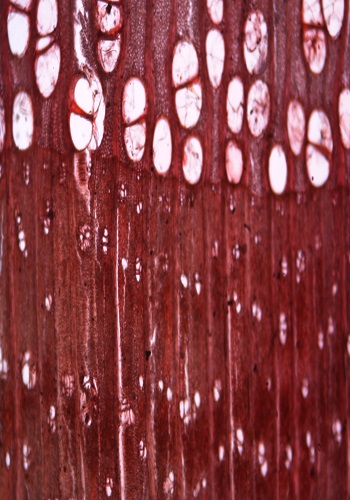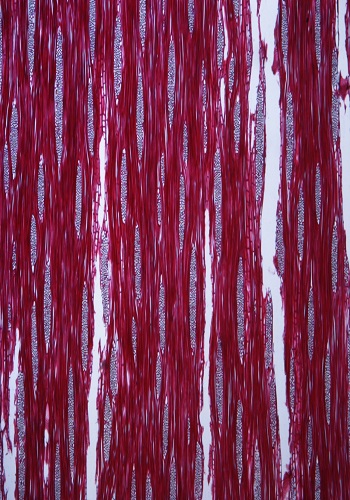The tree is native to Pakistan (Punjab and Sind), China, Central Asia and Afghanistan. It has been planted in many other parts of the world.
The heartwood is distinct from sapwood. The sapwood is white to yellowish-white in color while heartwood is bright yellowish-brown or golden-brown when first exposed changing into dull-brown with age with dark steaks. The wood of Toot is straight-grained, medium-coarse and uneven-textured.
The wood is ring porous, growth rings distinct and fairly conspicuous with the naked eye, 1-5 per inch. The vessel are open or occulated with tylosis. The springwood vessels are large to medium sized, solitary and 4.64-11.36/ mm2 in number and 216.42-439.64µ in diameter. The summerwood vessels medium sized to small or very small 4.64-42.34/mm2 in number and 71.74-264.19 µ in diameter. The rays are heterogeneous and found 0.75-1.86 /mm in cross section and 4.64-10.32/mm2 in tangential section. The largest wood rays are in height 774.49 µ (75 cells) and 82.65 µ (8 cells) in width. The wood fibers are non-libriform to semi-libriform, very fine, non-septate 0.72-1.40 mm long,9.7-23.51µ in diameter and have 1.84-3.94µ thick walls.
 |
 |
 |
| Cross view of Mulbery wood | Tangential view of Mulbery wood | Wood Fibers of Mulbery |
The white wood of Mulberry can be used as substiture for Ash in Furniture making. Further, it can be used in Sports goods, Veneer and plywood and carriages making.
1. Pearson, R.S and H.P. Brown.1932. Commercial Timbers of India.pp 915-918.
2. Sheikh, M.I.1993. Trees of Pakistan. Pakistan Forest Institute, Peshawar. pp 85. 3. Siddiqui, K.M., M. Ayaz and I. Mahmood.1996. Properties and Uses of Pakistani Timbers. Pakistan Forest Institute, Peshawar.pp 47-48.